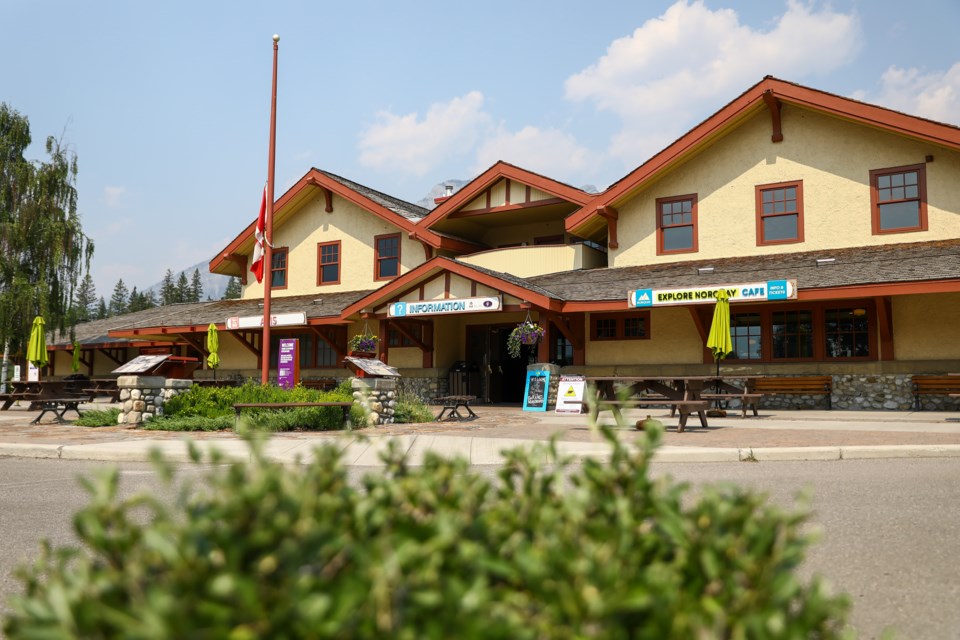BANFF – A passenger train proposal between Calgary and Banff is chugging along, getting a quasi commitment from the provincial government in this week’s throne speech outlying the UCP’s broad goals and direction.
Lieutenant Governor Salma Lakhani said the province needs to start planning for the inevitable need for high-speed rail through the Calgary-Red Deer-Edmonton corridor, as well as passenger train between Calgary and Banff.
“We need to decongest our highways to Kananaskis and Banff with a passenger rail tie between the Calgary airport, downtown Calgary and Canmore/Banff,” she said in the speech Monday (Oct. 30).
“These investments are decades long and should not be made randomly. They must be planned carefully and in an integrated fashion to ensure the most efficient and timely use of tax dollars.”
In July, the province announced a $3 million feasibility study for rail expansion in Calgary, including assessing passenger rail links beyond the city limits to connect Calgary with Banff by hydrogen-powered trains.
Earlier estimates of a public-private partnership for a $1.5 billion Banff-Calgary rail, which requires building a new line parallel to the CP tracks, called for approximately $30 million a year from the province over 50 years to help cover the project’s mortgage, making the province the ultimate owner of the train.
Half of the capital costs would be covered by the Canada Infrastructure Bank with the other half covered by the project proponents, Banff’s Liricon Capital and its project partner Plenary Associates, and debt financing.
In summer 2022, Alberta Transportation indicated the plan underestimates the capital costs and the annual financial contribution from the province, overestimates ridership, and has an unrealistic estimate of when the service could begin operation – and it was punted back to the backers.
Jan Waterous, managing partner of Liricon Capital, said the throne speech’s support for the Calgary Airport Banff Rail (CABR) project represents “another powerful push forward for this transformative mass transit rail system.”
“Importantly, the Throne Speech points out that in addition to serving the communities in the Bow Valley, it will also provide an environmentally friendly method of traveling to Kananaskis,” she said. “All in all, we are thrilled.”
Sarah Elmeligi, Banff-Kananaskis MLA, said the concept of passenger rail from Calgary to Banff is an “interesting idea”, but there are still far too many outstanding questions, top among them the environmental impact assessments that would be required.
If public transportation is the solution to addressing traffic congestion, she said she believes infrastructure is already in place to support a mass bus transportation network, adding a previous study has indicated that is more economically feasible than a train system.
“We actually have an existing bus transportation system like On-It and Roam that are already operating that could be amplified and expanded and that could happen immediately,” said Elmeligi, the NDP’s Opposition critic for tourism, sports and recreation.
She also questions the level of public consultation, saying it needs to be much broader than it has been so far, who pays for what, including whether Canmore is responsible for building its own train station, and who has jurisdiction for overseeing environmental impact assessments.
“What are the environmental impacts of building a whole new linear disturbance through an internationally significant wildlife corridor,” she said.
Elmeligi also worries a train would not actually address congestion, but simply bring more people to Banff and Canmore as private vehicles are still the preferred way to travel for Canadians and Americans.
“I haven't seen any data that sort of shows that a train would alleviate congestion or just increase visitors,” she said.
Waterous said the CABR project made substantial progress in summer in its fourth phase – the design. The fifth and final phase is construction.
“The major stages of the fourth phase, design, includes preliminary engineering, economic analysis, public consultation, regulatory approvals and comprehensive engineering, which then leads to a final investment decision before advancing to construction,” she said.
Waterous said there are two major initiatives currently underway at either end of CABR to advance the design phase, including the provincially initiated Airport Rail Connection Study to connect the airport to the Calgary Blue Line to the east and provide an express service from the airport to downtown in the west.
As part of this study, Waterous said CABR has proposed extending its system another four km east from the airport along Airport Trail to connect to the Blueline at Saddletowne to be able to provide a single rail solution from North East Calgary to the airport and downtown Calgary and the Bow Valley.
In addition, she said Liricon is now advancing the area redevelopment plan for the Banff train station lands through the Banff town council approval process.
“The ARP provides for railway passenger services which includes a shuttle centre and micro-mobility rentals, important for ensuring that once train passengers arrive they do not require a personal vehicle,” she said.
Waterous said Canadian Pacific Kansas City (CPKC) Rail continues to be a supportive CABR partner.
“Just this week, Norquay and CPKC extended their MOU for another year, which covers the key terms for CABR to develop a twinned track for 150 km within the CPKC Rail corridor between the Calgary Airport and Banff,” she said.
During a Bow Valley Builders and Developers Association (BOWDA) meeting Oct. 12, Premier Danielle Smith said several proposed rail projects are with Transportation Minister Devin Dreeshen.
“He’s doing feasibility studies on all of them to figure out how we can make all of this work together. It seems to me the line from the airport to Banff is going to be a very coveted line, high value, lots of traffic,” she said.
“There’s also the opportunity to potentially have us develop commuter bus service. Banff has already done some good work in that regard, but with the loss of Greyhound I feel like we may need to step in as a province and integrate the bus services associated with rail service. Now’s the time to do it.”



